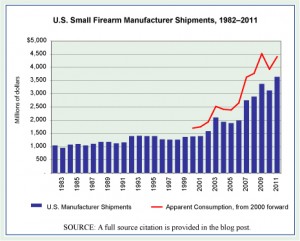Over the last several decades significant changes have been made to how the majority of people in the United States save for retirement. Getting reliable statistics on the topic, covering several decades, is difficult because of the very structural changes which have occurred in the ways that we save for retirement. The sort of pension plans that use to be regularly offered by large companies—plans in which an employee was promised a defined monthly payout after retirement—are fast disappearing in favor of hybrid plans that offer employees a framework into which they are the primary if not only investors, thus 401(k) and other similar plans. To illustrate the speed of change in this rush away from traditional pension plans, a glimpse at the coverage offered by the largest of firms, those most likely to offer such plans. In 1998, 90% of the companies in the Fortune 100 provided their new employees with a traditional pension. In 2012, that number had fallen to 30%.
In the absense of more traditional pension plans, many people are establishing independent retirement accounts or I.R.A.s to help them save for retirement. Today’s market size is the value of all money invested in an I.R.A. account in the United States as of October 31, 2012. Worth noting is the fact that this balance is higher than the balances of all the other retirement investment categories, such as 401(k) and 403(b) plans (with a balance of $5 trillion) or government employee retirement plans ($4.8 trillion) or the traditional pension plans offered by private sector employers ($2.6 trillion).
In looking at this market, please note that people often roll money into an I.R.A. account from funds in an employer-sponsored retirement plan when terminating employment with that company. These often large sums are part of the market being looked at here. Complicating matters further is the fact that there are oddities in the rules defining how investments are made into I.R.A.s, oddities which allow for more… creative investments in I.R.A.s by some. An extreme example of this came to light last summer, during the presidential campaign, when it was reported that candidate Romney’s I.R.A. account was valued at around $100 million. Since there are limits on how much may be contributed annually to such an account, speculation about the Romney I.R.A. balance ran rampant. But, for our purposes here, it is enough to say that the total balance invested in I.R.A. accounts includes such… anomalies. So, to put this national I.R.A. account balance into perspective, let us add that as of May 2011, 38.8% of all U.S. households had any sort of I.R.A. account. Furthermore, the I.R.A. balance of the median American family that did have an I.R.A. account in 2011 was $42,500.
Geographic reference: United States
Year: October 31, 2012
Market size: $5.3 trillion
Source: Ron Lieber, “Finding Advice for More Modest Retirement Investments,” The New York Times, page B1, January 19, 2013. Emily Brandon, “Top Companies Continue to Drop Pensions,” U.S. News, the Money section, available online here. William D. Cohan, “The Secret Behind Romney’s Magical IRA,” Bloomberg News, July 15, 2012, available online here.
Original source: Investment Company Institute, Towers Watson
Posted on January 24, 2013




